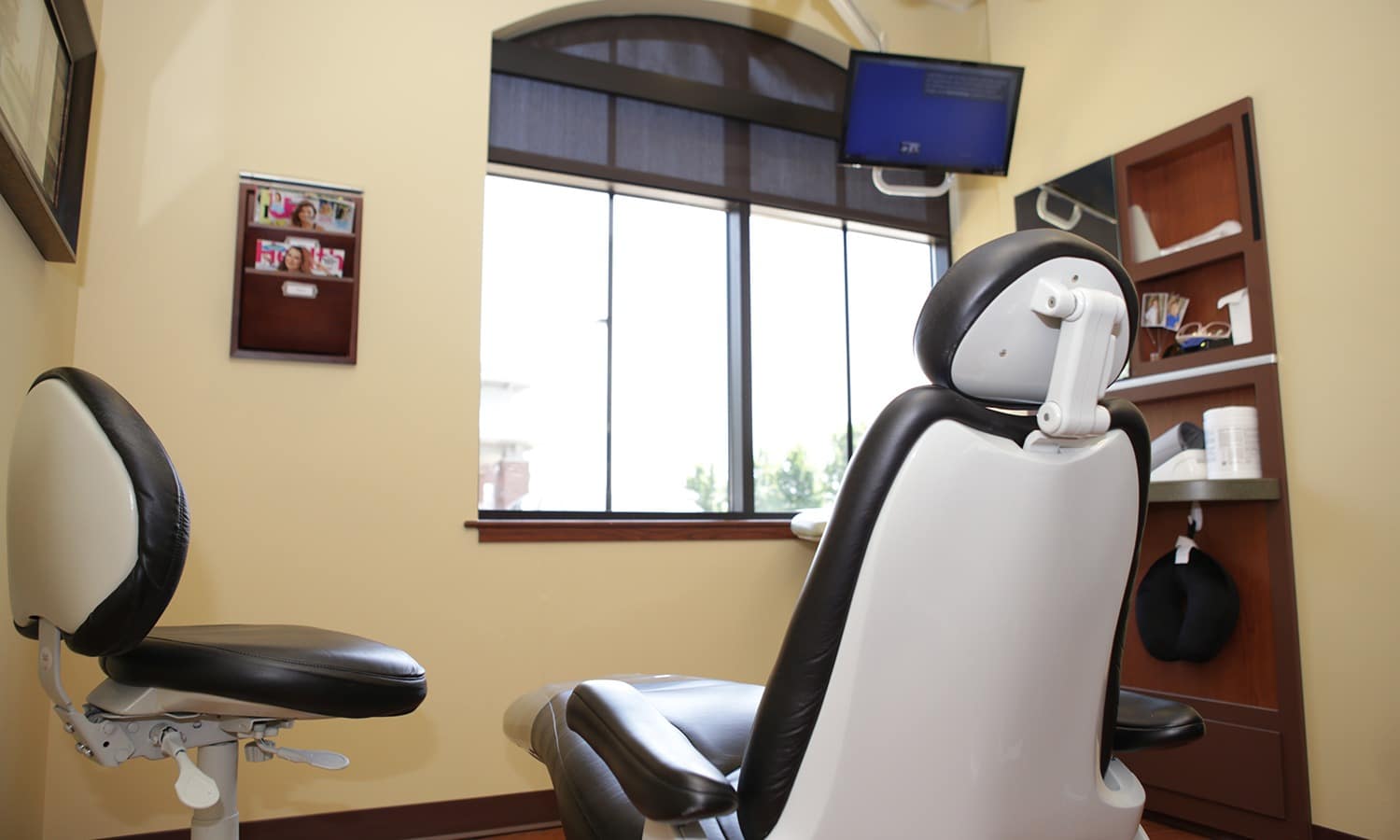Dental Bridges Restore Your Bright, Healthy Smile!
Dr. Klein and the friendly team at his dentist office in Grandville, MI has various options for replacing missing teeth, including dental bridges.
If you’re missing one or more teeth, you’re not alone. According to the American Dental Association, on average, adults between 20 and 64 years old have three decayed or missing teeth.
Contact us today for a consultation and let us help you get your brightest, most confident smile back!

What is a dental bridge?
A dental bridge is fixed (non-removable) replacement for one or more missing front or back teeth.
It most commonly utilizes crowns (or caps) placed on the teeth adjacent to the missing tooth to support the replacement tooth, called a pontic, which is attached to the crowns on each side.
Bridges can be placed on natural teeth or dental implants.
Watch this video to learn about the difference between a bridge and implant.
The Benefits of Dental Bridges
Bridges have been the standard of care for fixed replacement of a missing tooth for decades prior to the development of dental implants, and still can be an excellent treatment option.
Bridges for teeth can:
- Restore your smile
- Help maintain the shape of your face
- Be highly esthetic and long-lasting
- Strengthen weakened adjacent teeth with crowns
- Prevent remaining teeth from moving out of position
- Give you the ability to properly chew and speak again
- Replace missing teeth to distribute the forces in your bite properly
The Types of Dental Bridges Available
There are various styles and material choices that can be used to best fit a given situation.
Traditional Bridges
The most popular type of dental bridge, this consists of a false tooth or teeth being held in place by dental crowns that have been cemented onto each of the abutment teeth.
It can be used when you have natural teeth on both sides of the gap created by your missing tooth. They’re made of either porcelain fused to metal or ceramics.
Cantilever Bridges
These are supported on only one side, rather than two — kind of like a teeter-totter. They’re used when there are adjacent teeth on only one side of the missing tooth or teeth.
They can be more conservative and can be long-lasting in certain situations, but it places more stress on the supporting tooth due to lack of support on both sides of the pontic.
Maryland Bridges
Considered a conservative alternative to traditional bridges, these consist of a pontic that is held in place by a metal or porcelain framework that’s bonded onto the backs of the two teeth adjacent to the missing tooth.
These can only be used when you have a natural tooth on each side of the gap caused by the missing tooth or teeth.
Materials Used in Dental Bridges
All-Ceramic
An all-ceramic bridge utilizes an ultra-strong inner framework material, most commonly zirconia, with dental porcelain fused to the framework for beauty. All-ceramic bridges have no metal at all, so they can be exceptionally beautiful and very strong.
Porcelain Fused to Metal
This utilizes a metal framework, making it very strong. The metal allows more flexibility in design and function. It’s not as esthetic due to porcelain’s limited ability to mask the dark color of the metal.
Gold
This is a single layer, so it’s very strong, but also very expensive.
Unlike porcelain, there is no risk of chipping.
The Process for Getting a Dental Bridge
Bridges usually require multiple steps to complete, and can be very durable and long-lasting.
During the first visit, the abutment teeth are prepared, which involves recontouring these teeth by removing a portion of enamel to allow room for a crown to be placed over them.
Next, teeth impressions are made, which serve as a model from which the bridge, pontic, and crowns will be made. While it is being made, we will make a temporary bridge to protect the exposed teeth and gums.
During the second visit, the temporary bridge is removed and the new porcelain or metal bridge will be adjusted and checked to achieve a proper fit.
Depending on the individual, multiple visits may be required to check the fit of the metal framework and bite.
If it’s a fixed bridge, the dentist may temporarily cement it in place to ensure it’s fitting properly. The bridge is then cemented into place after a couple of weeks.
How to Care for Your Dental Bridge
The bridge depends on the solid foundation offered by the surrounding teeth, so it’s important to keep your other teeth healthy and strong.
Make sure to brush twice a day, floss, and use an antiseptic mouthwash daily. This will help prevent tooth decay and gum disease that can lead to tooth loss.
It’s also important to see Klein Dentistry for regular checkups, professional cleanings, and exams every six months to help diagnose possible problems at an early stage.
The Klein Dentistry
Difference
A flexible approach to dental restoration.
Our experienced team has the knowledge, background and equipment to restore your smile and oral health back to its natural state. We focus on replacing or repairing teeth, restoring bite, and strengthening your mouth to ensure not only a healthy smile, but optimum function, allowing you to eat what you want, when you want it.


